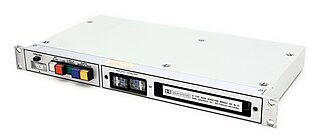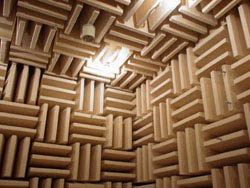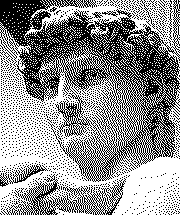Audio signal processing is a subfield of signal processing that is concerned with the electronic manipulation of audio signals. Audio signals are electronic representations of sound waves—longitudinal waves which travel through air, consisting of compressions and rarefactions. The energy contained in audio signals is typically measured in decibels. As audio signals may be represented in either digital or analog format, processing may occur in either domain. Analog processors operate directly on the electrical signal, while digital processors operate mathematically on its digital representation.

A Dolby noise-reduction system, or Dolby NR, is one of a series of noise reduction systems developed by Dolby Laboratories for use in analog audio tape recording. The first was Dolby A, a professional broadband noise reduction for recording studios in 1965, but the best-known is Dolby B, a sliding band system for the consumer market, which helped make high fidelity practical on cassette tapes which used a relatively noisy tape size and speed. It is common on high fidelity stereo tape players and recorders to the present day. Of the noise reduction systems, Dolby A and Dolby SR were developed for professional use. Dolby B, C, and S were designed for the consumer market. Aside from Dolby HX, all the Dolby variants work by companding, or compressing the dynamic range of the sound during recording and expanding it during playback.

Noise-cancelling headphones, or noise-canceling headphones, are headphones that reduce unwanted ambient sounds using active noise control. This is distinct from passive headphones which, if they reduce ambient sounds at all, use techniques such as soundproofing.

Soundproofing is any means of reducing the sound pressure with respect to a specified sound source and receptor. There are several basic approaches to reducing sound: increasing the distance between source and receiver, using noise barriers to reflect or absorb the energy of the sound waves, using damping structures such as sound baffles, or using active antinoise sound generators.

Active noise control (ANC), also known as noise cancellation, or active noise reduction (ANR), is a method for reducing unwanted sound by the addition of a second sound specifically designed to cancel the first.

dbx is a family of noise reduction systems developed by the company of the same name. The most common implementations are dbx Type I and dbx Type II for analog tape recording and, less commonly, vinyl LPs. A separate implementation, known as dbx-TV, is part of the MTS system used to provide stereo sound to North American and certain other TV systems. The company – dbx, Inc. – was also involved with Dynamic Noise Reduction (DNR) systems.

Dolby Laboratories, Inc. is an American company specializing in audio noise reduction and audio encoding/compression. Dolby licenses its technologies to consumer electronics manufacturers.
Remaster refers to changing the quality of the sound or of the image, or both, of previously created recordings, either audiophonic, cinematic, or videographic.

Dither is an intentionally applied form of noise used to randomize quantization error, preventing large-scale patterns such as color banding in images. Dither is routinely used in processing of both digital audio and video data, and is often one of the last stages of mastering audio to a CD.

Digital artifact in information science, is any undesired or unintended alteration in data introduced in a digital process by an involved technique and/or technology. In anthropology and archeology a digital artifact is an artifact that is of a digital nature or creation. For example, a gif is such an artifact.

Image noise is random variation of brightness or color information in images, and is usually an aspect of electronic noise. It can be produced by the sensor and circuitry of a scanner or digital camera. Image noise can also originate in film grain and in the unavoidable shot noise of an ideal photon detector. Image noise is an undesirable by-product of image capture that obscures the desired information.

In electronics, noise is an unwanted disturbance in an electrical signal. Noise generated by electronic devices varies greatly as it is produced by several different effects.
In sound and music production, sonic artifact, or simply artifact, refers to sonic material that is accidental or unwanted, resulting from the editing or manipulation of a sound.

Diamond Cut Audio Restoration Tools is a set of digital audio editor tools from Diamond Cut Productions used for audio restoration, record restoration, sound restoration of gramophone records and other audio containing media.
In signal processing, noise is a general term for unwanted modifications that a signal may suffer during capture, storage, transmission, processing, or conversion.
This page is based on this
Wikipedia article Text is available under the
CC BY-SA 4.0 license; additional terms may apply.
Images, videos and audio are available under their respective licenses.












